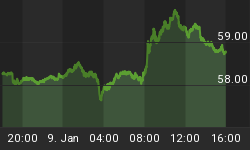7/7/2011 2:35:58 AM
The majors move higher but Financials and Semiconductors are still weak...
Recommendation:
Take no action.
Click here to access our stock market chat rooms today! For a limited time, try our chat room for free. No subscription necessary to give it a try.
Stock Market Trends:

- ETF Positions indicated as Green are Long ETF positions and those indicated as Red are short positions.
- The State of the stock market is used to determine how you should trade. A trending market can ignore support and resistance levels and maintain its direction longer than most traders think it will.
- The BIAS is used to determine how aggressive or defensive you should be with an ETF position. If the BIAS is Bullish but the stock market is in a Trading state, you might enter a short trade to take advantage of a reversal off of resistance. The BIAS tells you to exit that ETF trade on "weaker" signals than you might otherwise trade on as the stock market is predisposed to move in the direction of BIAS.
- At Risk is generally neutral represented by "-". When it is "Bullish" or "Bearish" it warns of a potential change in the BIAS.
- The Moving Averages are noted as they are important signposts used by the Chartists community in determining the relative health of the markets.
Best ETFs to buy now (current positions):
Long DIA at $125.90
Long SPY at $134.43
Long QQQ at $58.20
Click here to learn more about my services and for our ETF Trend Trading.
Value Portfolio:
We are long TBT at $32.50 from June 16th. (TBT closed at $34.12 on July 6th)
We sold short one contract TLT July $98 Calls at $1.19 per share on June 16th
We sold short one contract TLT Aug $98 Calls at $1.80 per share on June 16th
We sold short one contract TLT Sep $98 Calls at $2.13 per share on June 16th
(TLT closed at $94.32 so the contracts we sold are nearly four dollars out of the money with price potentially reversing lower later in the week. Time value on all option contracts we sold continues to erode which means we can buy them back for less than we sold them for or, if price stays below $98.00, let them expire worthless and keep all the money).
Daily Trading Action
The major index ETFs opened lower and then traded first lower then higher before returning lower fifteen minutes after the open. That move lasted for a bit more than a half hour before the major indexes once again marched higher. That move lasted through the morning and the lunch hour before reversing at 1:00pm when the indexes lost some of their gains through the afternoon but for the most part rallied in the final hour to finish with modest gains not too far off their intraday highs. The Dow moved into an uptrend state. The Semiconductor Index (SOX 411.79 -3.15) lost about three quarters of one percent rallying to close above its 200-Day Exponential Moving Average (DEMA) but below its 200-Day Simple Moving Average (DMA). The Russell-2000 (IWM 84.38 +0.34) tacked on a gain of nearly one half of one percent. The Regional Bank Index (KRE 25.75 +0.13) gained a half of one percent while the Bank Index (KBE 24.00 -0.17) lost two thirds of one percent. The Finance Sector ETF (XLF 15.41 -0.08) fell half of one percent. With the exception of the Dow and the Russell-2000, all equity indexes we regularly monitor are now in trading states and all have a BEARISH BIAS but are positioned to potentially reverse that this month. Long term bonds (TLT 94.32 +0.48) bounced on light volume as it did on Tuesday. TLT is in a downtrend state but has a BULLISH BIAS but that may change by the end of the week. NYSE trading volume was light with 821M shares traded. NASDAQ share volume was light with 1.629B shares traded.
There were three economic reports of interest released:
- MBA Mortgage Index for last week fell -5.2%
- Challenger Job Cuts (Jun) came in at +5.2% Year over Year
- ISM Services (Jun) came in at 53.3 versus an expected 54.0
The first two reports were released two hours or more before the open. The last report was released at 10:00am.
The U.S. dollar rose six tenths of one percent.
The yield for the 10-year note fell four basis points to close at 3.10. The price of the near term futures contract for a barrel of oil fell twenty-four cents to close at $96.65.
Implied volatility for the S&P-500 (VIX 16.34+0.28) rose more then one percent while the implied volatility for the NASDAQ-100 (VXN 17.85 +0.09) rose a half of one percent.
Energy (-0.2%), Consumer Discretionary (-0.3%), Financials (-0.6%), and Telecom (-0.8%) declined to day while the other six economic sectors of the S&P-500 posted fractional gains.
Market internals were mixed with advancers leading decliners 9:8 on the NYSE and by 4:3 on the NASDAQ. Down volume edged up volume on the NYSE while up volume led down volume by 5:4 on the NASDAQ. The index put/call ratio fell -0.25 to close at 1.43. The equity put/call ratio rose +0.07 to close at 0.71.
Commentary:
Wednesday saw another day of a tight trading range and this time all the major indexes moved higher. Utilities, Consumer Staples, and Healthcare all moved higher which is somewhat out of whack with the "risk on" trade. We are looking for the bounce for the longer term bonds to complete and for bond prices to once again begin to decline. The wildcard is the dollar, which has rallied fairly strongly thus far. We are still looking for equities to continue their advance into the end of the week.
We hope you have enjoyed this edition of the McMillan portfolio. You may send comments to mark@stockbarometer.com.















